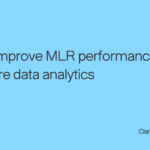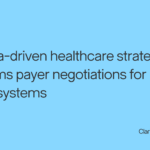Employers are struggling under the weight of increasing healthcare costs for their employees — and are turning to third-party administrators to help. U.S. employers expect their health benefit cost per employee will jump an average of 5.4% in 2024, according to a report from Mercer — and that projection includes changes employers plan to make to hold down costs. If no changes were made, costs would rise 6.6%. Third-party administrators (TPAs) can play an invaluable role in helping self-insured employers contain the cost of care without passing it on to their employees through increased premiums. Here is a three-step strategy third-party administrators can use to help their employer customers hold down healthcare costs. To start on a healthcare cost-cutting journey for employers, third-party administrators need to dig into data on the current in-network providers and employer-specific provider preferences, like hospital networks. Since specialty providers drive up to a quarter of healthcare spend, examining their cost, quality, and efficiency data is a great place to start. However, because healthcare data is notoriously siloed, it can be difficult to do so. It is so difficult, in fact, that health IT staff spend 43% of their work time on data extraction and harmonization – that’s a high cost of time and effort. Using a provider performance benchmarking solution that provides comprehensive, precise, and case mix-adjusted data can save time and dollars. Normalizing data makes it easier and fairer to evaluate provider performance against peers in the market. This is an especially important service for TPAs to offer now, as 87% of employers are prioritizing cost and quality transparency for themselves and their employees as a way to contain costs, according to the Business Group on Health’s 2024 Large Employer Health Care Strategy report. Third-party administrators who can dig in and provide more transparent provider performance data to their employers will be in high demand. After evaluating providers against benchmarks and market peers, the next step is identifying those who perform better than those peers. To define a provider as “high performing” means looking at more than just cost. The definition needs to include quality, patient outcomes and patient satisfaction, too. Including high-performing providers in the network will not only drive cost savings and better health outcomes but also drive member satisfaction and group satisfaction to support renewal. Employers can also reinvest savings for continued growth. Since more than half of employers plan to implement programs or even switch vendors to reduce total healthcare costs, according to a 2022 WTW report, group satisfaction should be top of mind for any prudent TPA. The final step for healthcare third-party administrators looking to deliver cost savings is to help self-funded employers build Centers of Excellence (COEs) for their employees. COEs are chosen groups of doctors and hospitals that meet high standards for cost and quality for particular conditions. They are a valuable strategy for employers who want to cut care costs while enabling access to the best providers in their region. They are typically built for conditions that drive the highest spend, including cancer treatment, musculoskeletal surgery, heart surgery, and pregnancy. Though they are becoming more common, more than half of employers still don’t have specialist COEs for their employees and dependents, according to a recent WTW report. Third-party administrators can help create them, using the data and insights gained from steps one and two outlined above. Going it alone, however, can be a research-intensive and time-consuming process. That’s something one health plan benefits administrator knew all too well, as it used to take six months to review a facility to be included in its COE. When it deployed Clarify Health’s on-demand provider performance benchmarks, however, it was able to evaluate 550+ hospitals, health systems, and surgeons in half the time. What is typically a time-consuming process is made simpler with consolidated network and claims data, machine learning, and AI capabilities. Third-party administrators can differentiate themselves from the competition by building and optimizing networks around the highest-performing providers that deliver the greatest value to groups and better member outcomes. To do so, they need rich data and an analytics platform to help transparently benchmark providers by cost, quality, and outcomes. By improving network performance, TPAs can play an important role in keeping care costs down for employers and members. Step 1: Gain deeper insights into provider performance
Step 2: Identify high-performing providers
Step 3: Deliver network excellence
Harness data to combat rising employer care costs
- Author Details





